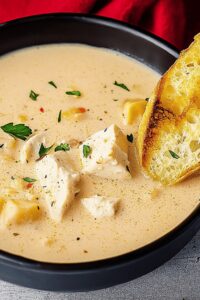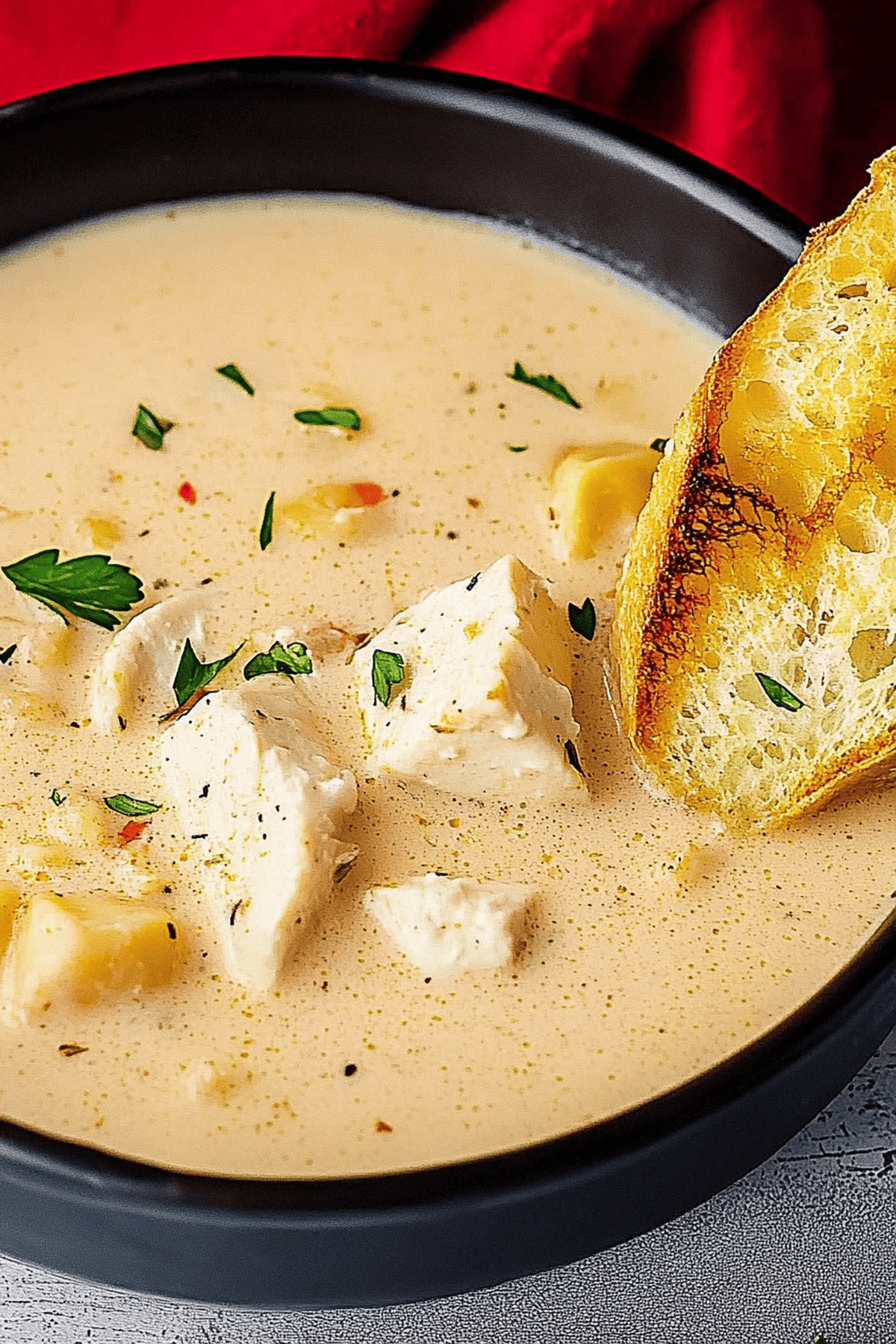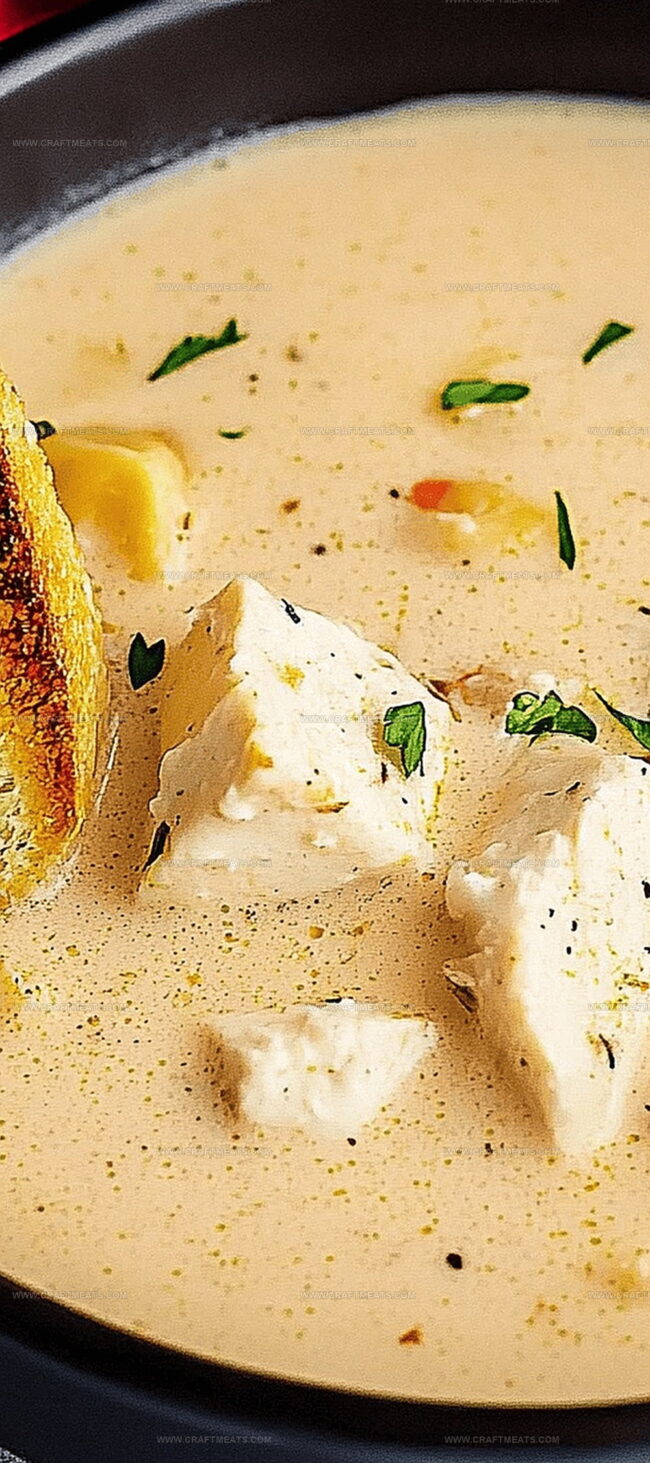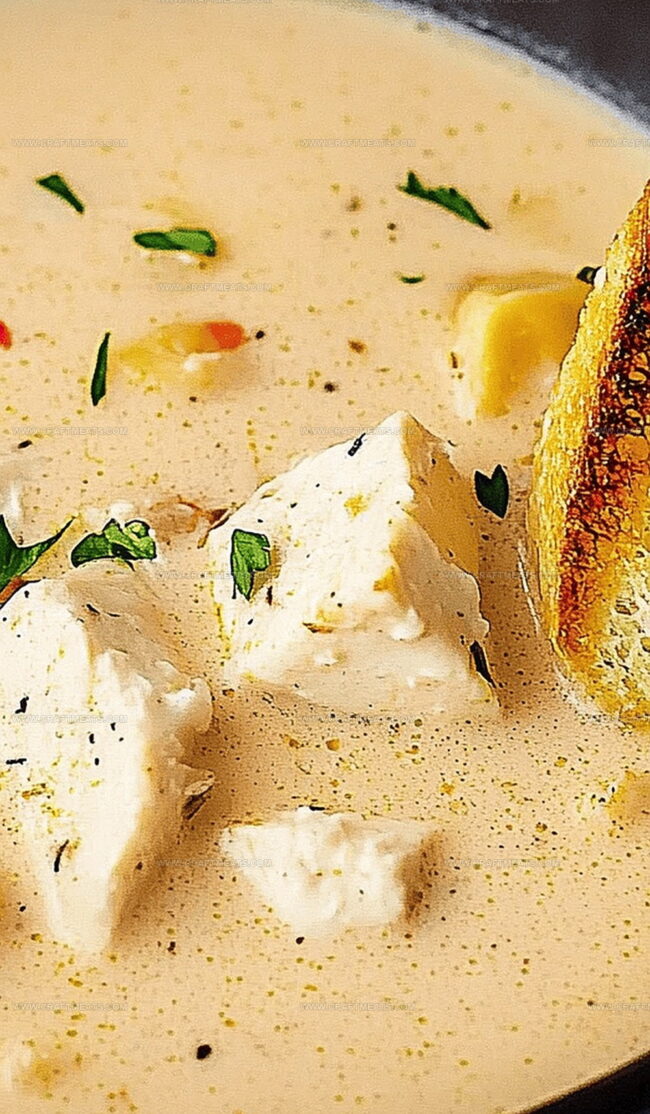Creamy Seafood Bisque Recipe Everyone Loves
Rich seafood bisque reimagines ordinary meals into extraordinary culinary experiences that tantalize your taste buds with sophisticated coastal flavors.
Creamy textures and delicate marine ingredients merge into a luxurious soup that whispers elegant dining possibilities.
Mediterranean coastal traditions inspire this velvety concoction, blending carefully selected oceanic treasures with complex aromatics.
Sophisticated home cooks understand how strategic ingredient selection elevates this classic dish from simple to sublime.
Professional chefs appreciate the nuanced techniques required to achieve perfect balance between delicate seafood and robust cream-based foundations.
Smooth, sophisticated preparation methods unlock incredible depth of flavor that surprises and delights dinner guests.
Elegant yet approachable, this seafood bisque promises a memorable dining adventure that connects you with refined culinary traditions.
Why Seafood Bisque Is the Richest, Creamiest Seafood Soup
What You’ll Need for Homemade Seafood Bisque
Base Ingredients:Thickening and Seasoning Ingredients:Liquid and Seafood Ingredients:How to Make a Silky, Flavor-Packed Seafood Bisque
Step 1: Prepare the Aromatic Base
Warm a large pot over medium heat. Melt butter until it glistens. Add finely chopped onions and crushed garlic, sautéing until the onions become soft and translucent, releasing their sweet fragrance throughout the kitchen.
Step 2: Create a Flavor-Packed Roux
Sprinkle in these ingredients:Stir continuously, allowing the mixture to combine and develop a rich, golden color that promises deep, complex flavors.
Step 3: Blend the Creamy Liquid Foundation
Slowly pour in:Whisk gently and consistently to prevent any lumps from forming. The liquid should transform into a smooth, silky mixture that promises a luxurious texture.
Step 4: Introduce Fresh Seafood
Select your favorite seafood, such as:Carefully add the raw seafood to the simmering liquid. Allow each piece to cook gently, absorbing the surrounding flavors and becoming perfectly tender.
Step 5: Simmer and Develop Depth
Reduce heat to low. Let the bisque bubble softly for 10 minutes. This slow cooking process allows the seafood to cook thoroughly while the flavors dance and intermingle, creating a harmonious blend.
Step 6: Elevate with Finishing Touches
Taste and adjust seasonings as needed. Ladle the steaming bisque into warm bowls. Sprinkle with fresh chopped herbs like parsley or chives. For an extra kick, dust with a pinch of Cajun seasoning.
Serving Suggestion: Pair with crusty bread or oyster crackers for a complete, comforting meal that celebrates the ocean’s bounty.
Tips for Creamy Texture and Perfect Seafood Blend
How to Store and Reheat Bisque Without Losing Creaminess
What to Serve with a Bowl of Seafood Bisque
Elegant Variations of Seafood Bisque to Try
Print
Seafood Bisque Recipe
- Total Time: 35 minutes
- Yield: 6 1x
Description
Creamy French seafood bisque brings coastal elegance to your dining table. Rich lobster and shrimp mingle with aromatic herbs, creating a luxurious soup you’ll savor down to the last silky spoonful.
Ingredients
Main Ingredients:
- 1½ pounds (680g) raw seafood of choice (such as shrimp, crab, or lobster)
- 1 cup (226g) butter
- 1 quart (945ml) heavy cream
- 1 quart (945ml) whole milk
Vegetables and Aromatics:
- 1 small onion, diced
- 2 cloves garlic, minced
Seasonings and Thickeners:
- ½ cup (65g) all-purpose flour
- 2 tablespoons tomato paste
- 2 teaspoons Cajun seasoning
- 1 teaspoon Old Bay seasoning
Instructions
- Craft a robust flavor base by melting butter in a spacious pot, sautéing finely chopped onions and garlic until they become translucent and aromatic, releasing their delicate essence.
- Transform the foundation by integrating flour, tomato paste, Cajun seasoning, and Old Bay seasoning, whisking them together to create a complex, well-blended roux that will provide depth and structural integrity to the bisque.
- Progressively introduce heavy cream and whole milk, using a steady whisking motion to ensure a silky, lump-free liquid that forms the creamy canvas of the seafood bisque.
- Gently lower raw seafood into the simmering liquid, allowing shrimp, crab, or lobster to dance and cook slowly, absorbing the rich, layered flavors of the developing broth.
- Reduce heat and let the bisque gently simmer, allowing seafood to cook thoroughly and enabling the intricate seasonings to harmonize and intensify, creating a luxurious maritime symphony.
- Taste and refine the bisque’s seasoning, adjusting salt, pepper, and additional spices to achieve a perfectly balanced flavor profile that celebrates the oceanic ingredients.
- Ladle the steaming bisque into warm bowls, adorning the surface with freshly chopped herbs like parsley or chives, and optionally sprinkle extra Cajun seasoning for a vibrant, visually appealing presentation.
Notes
- Uncover the secret to a luxurious seafood base that transforms simple ingredients into a creamy, indulgent experience.
- Discover how layering spices and aromatics creates depth, turning this bisque into a restaurant-worthy comfort dish.
- Master the delicate balance of cooking seafood perfectly without overcooking, ensuring tender, succulent bites in every spoonful.
- Prep Time: 15 minutes
- Cook Time: 20 minutes
- Category: Appetizer, Dinner
- Method: Simmering
- Cuisine: French
Nutrition
- Serving Size: 6
- Calories: 645
- Sugar: 5g
- Sodium: 720mg
- Fat: 46g
- Saturated Fat: 27g
- Unsaturated Fat: 15g
- Trans Fat: 1g
- Carbohydrates: 36g
- Fiber: 1g
- Protein: 22g
- Cholesterol: 210mg




Isabella Rossi
Founder & Culinary Content Creator
Expertise
Recipe Development, Traditional Irish and European Cuisines, Food Styling and Photography, Culinary Education
Education
Dublin Institute of Technology (DIT) – School of Culinary Arts and Food Technology
Ballymaloe Cookery School
Liam is the voice behind many of Craft Meats’ most flavorful features. With roots in Dublin’s smoky barbecue scene and a culinary degree from the Dublin Institute of Technology, he brings time-tested cooking techniques to life.
His training at Ballymaloe Cookery School sharpened his farm-to-table approach, giving him a deep respect for every ingredient he writes about.
He’s not about overcomplicating the process, just helping you cook meat that’s worth talking about. When he’s not writing or grilling, he’s out foraging or nerding out on regional spice blends to add to his next recipe.